This article describes the settlement of Buijyvoetses in areas outside of the traditional western European homelands of Belgium and the Netherlands.
In its current state this article is hopelessly incomplete, but it is intended as a 'growing article': we invite anyone who has information to add to the article to do so. You may also notice that the article contains more questions than answers. Of course we hope that with your help that will change.
Tom Bijvoet (oktober 2004)
Please e-mail any textual additions, photographs, documents for inclusion to info@bijvoet.org, or mail them to the Foundation’s postal address in Zolder, Belgium.
We have structured the article by country and per country more or less chronologically taking the first date of arrival as the starting point for a family history.
Contributions by:
Gerard Yntema – Michel Buyvoets – Simone Byvoets - Marguerite Hedding - Tom Bijvoet
THE UNITED STATES OF AMERICA
Everyone entering the United States through the port of New York between 1892 and 1924 passed through the immigration office on Ellis Island. The Office lay close to the foot of the Statue of Liberty. On busy days as many as 5000 people would be registered. Today Ellis Island is an immigration museum. Almost all the rooms have been kept in their original state. The museum is well worth a visit, it is very impressive.
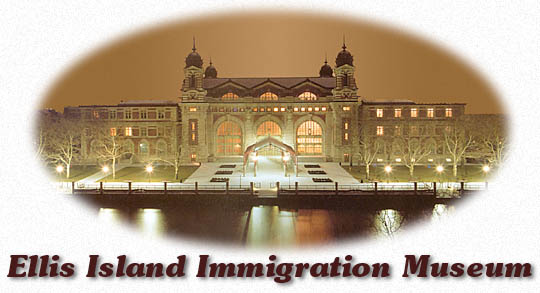
If you are not immediately in the position to visit Ellis Island in person, a visit to the website at www.ellisisland.org is the next best thing. The extensive Ellis Island archives are accessible through the website. A simple registration process gives access to archives and the search for family members can begin. We have found a number of family members there.
Dirk Byvoet from Oude Niedorp
Dirk Byvoet from Oude Niedorp in the province of North Holland arrived in New York on November 10, 1908. He travelled on the S.S. Noordam. He was 34 years old and single.
 The ship’s manifest gives a wealth of interesting information about Dirk. He was born in Heerhugowaard. His occupation is listed as farmer. He travelled with a friend called Jacob Prins, a carpenter, also from Oude Niedorp. His destination in the United States was Missoula, Montana, where he and Jacob intended to join Jacob’s brother, H. Prins.
The ship’s manifest gives a wealth of interesting information about Dirk. He was born in Heerhugowaard. His occupation is listed as farmer. He travelled with a friend called Jacob Prins, a carpenter, also from Oude Niedorp. His destination in the United States was Missoula, Montana, where he and Jacob intended to join Jacob’s brother, H. Prins.
Thus far we have been unable to find more information about Dirk Byvoet. We would like to know if he stayed in the United States, where he settled and whether he had any offspring. Neither have we been able to locate Dirk’s place in the family tree. The ship’s manifest lists the name and residence of the nearest relative in the country of origin. Unfortunately we have been unable to decipher the handwriting. This information could give us a clue about Dirk’s place in the family tree. Please let us know if you can read the information on the manifest.
Arjen Byvoets and extended family
Arjen Bijvoets (who changed his name to Byvoets in the United States) was the brother of Johannes Bijvoets, the coppersmith from Workum who is profiled in detail in one of the other articles on the site [De laatste koperslagere laatste koperslager = The last coppersmith]. They can be found in the Hubertus Beyvoets lineage.
Arjen also worked as a coppersmith in Workum, but according to family lore Arjen’s shop and store burned down. That may have been a reason for his emigration to America.
In 1913 Arjen, 35 years old, travelled to the United States on the S.S. Rijndam with his wife Alida Siemensma, also 35 and their eight children ranging in age from one to nine years old. With them travelled Tjitske Siemensma, possibly a younger sister, niece or cousin of Alida, who is listed as the family’s servant or nurse. Gerard Yntema is related to Alida Siemensma and hence to Arjen and Alida’s descendants, who still live in the United States in large numbers. He has added a lot of interesting information about the family to the genealogical report on this site. See the webpage of Arjen Bijvoets.
Simone Byvoets
We were very excited when on September 26th, 2004 we received the following e-mail from Simone Byvoets:
Your website mentioned you were interested in learning more about relatives in America. I went to the 95th birthday party for my aunt Dorothy last night where we were talking about our family history. My aunt Julia, who is going to be 94 next month was also there. I think they are #224 Dieuwke Bijvoets and #226 Jule Bijvoets on your genealogy chart. My father was Siemen, #227.
My father went by the name of Simon after he immigrated to America. He had three children, Arjen, Peter, and Simone. I am Simone, and am named after my father. I grew up near Chicago and now live in Indiana, not too far from the border of Illinois. I am a lawyer and work in Chicago. My brothers live in Indiana too.
My grandfather was a coppersmith and opened a tinplating shop in Chicago after he came to America. My brother Arjen became a tinplater like my father (and my father’s brothers), and still owns the business my grandfather started. His three sons are also tinplaters and are also working at the family business. There are many descendants of #165 Arjen Byvoets in Chicago, and there are also some in Michigan, Hawaii, Wisconsin, and South Carolina. Are you interested in learning more about our branch of the family?
Yours truly,
Simone Byvoets
Nico and Gijsbertha Bijvoet and family
Nicolaas (Nico) Wilhelmus Maria Bijvoet (Dierick Lineage) and his wife Gijsbertha Maria Helena Barbara Wittkampf arrived in the United States a month before the Nazis invaded the Netherlands on May 10th, 1940.
With them were their two daughters, ten-year-old Elsje (Elisabeth Johanna) and eight-year-old Isje (Isabella Johanna Maria Josepha Therese Barbara).
Nico was a partner in P. Bijvoet & Co. Bulb Exporters in Bloemendaal. We do not know if Nico and his family moved to the United States with the express intention of settling there, or whether they were on a business trip and got stuck because of the war and stayed on.
Maybe their direct family members can shed more light on this story.
Nico passed away in St. Augustine in Florida in 1966. Gijsbertha survived him by 17 years. She died in 1983.
Elsje married Carl Bryant Day in 1949. They had three children, Charles E., Carl Bryant and James E. Elsje died in 1990.
St. Ambrose Church
 Isje died peacefully at her home in St. Augustine in 2004 after an extended illness. She lived in various locations up and down the Eastern Seaboard before her family settled in St. Johns County in 1947. She moved to Hastings in 1954 after marrying Ansley Hall, Jr. and lived there until they moved to St. Augustine in 2001.
Isje died peacefully at her home in St. Augustine in 2004 after an extended illness. She lived in various locations up and down the Eastern Seaboard before her family settled in St. Johns County in 1947. She moved to Hastings in 1954 after marrying Ansley Hall, Jr. and lived there until they moved to St. Augustine in 2001.
A graduate of St. Joseph Academy in St. Augustine in 1949 and the St. Vincentís School of Nursing in Jacksonville in 1952, Isje was a registered nurse and homemaker. She was a member of St. Ambrose Catholic Church in Elkton, where she was a Eucharistic minister and choir member. Her volunteer work over the years included the Red Cross, St. Gerard House and St. Johns County Learn to Read. She served one term on the Hastings Town Council.
Isje and Ansley had six children: Ansley, Stephen Byvoet, Thomas K., Nicholas W., Marjorie and Mary.
Many descendants of Nico and Gijsbertha, grandchildren and great-grandchildren, currently live in the Eastern United States.
Paul and Jan Albert Bijvoet
Brothers Paul and Jan Albert Bijvoet (Dierick Lineage) both emigrated to the United States with their respective families. Paul in the 1960s and Jan Albert in 1976. Their story is told in detail in a separate article: http://www.bijvoet.org/C1_Artikelen/Alabama/alabama_english.htm.
Dee Byvoet
|
Dee Byvoet lives in Colorado Springs with her son Stephen. We know very little about Dee, except that she must be a master fruitcake hurler, witness an article from the Colorado Springs Independent that appeared in the December 30, 2004 issue. For those unfamiliar with the noble sport of fruitcake tossing the article explains:
It is a matter of some pride to us that a Byvoet should be one of the more accomplished contestants: |
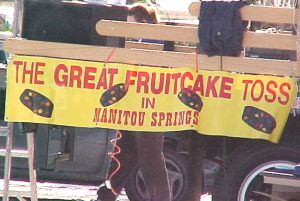 |
"It's really fun, though you sometimes freeze your ass off," said Dee Byvoet, who has won in at least one category for the last four years.Last year, Byvoet won the Ugliest Fruitcake competition with her nutty depiction of Saddam Hussein.
And it is of course great to know that the family tradition is being passed on to the next generation.
Her son Stephen also competes every year, and he won last year's launch portion by sending the holiday concoction 285 feet via bow and arrow. "He's 17," said Byvoet.
Dee and Stephen, we’d like to learn more about you. Get in touch if you wish!
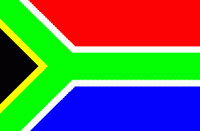
SOUTH AFRICA
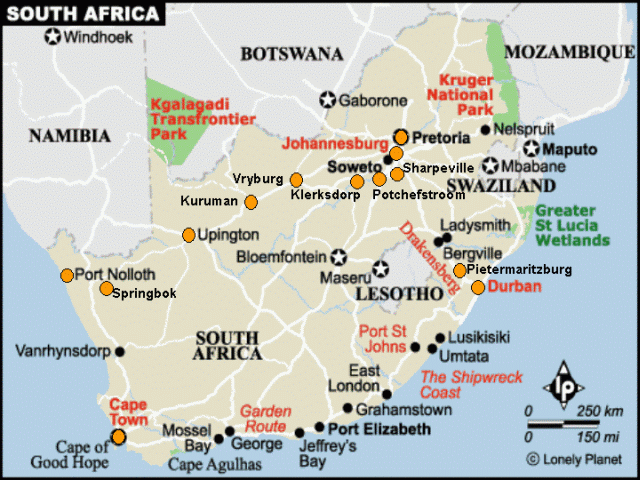
Three children of Henric and Maria Bijvoet of Overveen
Three of the eight children of Henric Bijvoet (Dierick lineage) and Maria Bouvy have South African connections.
Their oldest daughter, Maria Sophia Bijvoet married Theodoor Kloppenburg in Johannesburg in 1951. He worked as an economist for Royal Dutch Shell.
A few years later, in 1954, Maria’s younger sister Sophia Maria Barbara Bijvoet married violinist Ronald Ivor Parker in Capetown after fifteen years as a nun. In 1934 she had taken her vows and joined the order of Redemptoristines. In 1949 she left the convent and a year later she set sail for South Africa.
The two sisters returned to the Netherlands, where they both lived until their deaths. Maria passed away in Bussum in 1974 and Sophia in Velp in 1991.
Their youngest brother, Antonius Jozef Theodorus Bijvoet, who also lived in South Africa, stayed there until his death, in 1980 in Blairgowrie, a suburb of Johannesburg.
Antonius married Francisca Brans in 1934 in Heemstede. They adopted one child, Marie Yvonne Bijvoet, who was born in Pretoria in 1943.
Antonius was an engineer and had a great interest and aptitude for working with clocks. He was often called upon to restore and repair antique clocks, from small clocks to large Grandfather clocks, as he was one of the few people in South Africa who had the expertise to do this. He had a wonderful sense of humour, and was a friendly and kind person.
Which family member can put flesh on the bones of this story?
Hein and Hélène Bijvoet
Henricus Maria (Hein) Bijvoet of the Forefather Buyvoets lineage) was born in the Dutch East Indies in 1925, lived there until he was nine years old and then came to the ancestral hometown of Tilburg in the Dutch province of Noord-Brabant with his parents, brother and sister.
There he spent his adolescence, which coincided for a large part with the German occupation of the Netherlands. As soon as the Allied forces liberated Tilburg he enlisted in the army, together with his three year older brother Wilhelmus Petrus Maria (Wim) Bijvoet, “to kick the Japanese out of their land of birth”.
 Both received their military training in the United Kingdom and shipped to the Dutch East Indies, Hein as a first lieutenant in the infantry and Wim as a captain in the cavalry. When they arrived in Indonesia the enemy had changed. They no longer faced the Japanese, who had been defeated by the allies while the young men were being prepared for tropical Jungle warfare under England’s grey skies, but the guerillas of the Indonesian independence movement. Both men experienced the atrocities of war first hand.
Both received their military training in the United Kingdom and shipped to the Dutch East Indies, Hein as a first lieutenant in the infantry and Wim as a captain in the cavalry. When they arrived in Indonesia the enemy had changed. They no longer faced the Japanese, who had been defeated by the allies while the young men were being prepared for tropical Jungle warfare under England’s grey skies, but the guerillas of the Indonesian independence movement. Both men experienced the atrocities of war first hand.
After three years they returned to the Netherlands, proud but demoralized veterans, defeated by politics rather than military might. Wim stayed on in the army and fought with the United Nations forces in the Korean War. Hein returned to civilian life and joined the Philips electronics company in Eindhoven as a clerk. There he met a lovely young girl called Hélène Crousaz, nine years his junior. In those days Dutch society was strictly divided into what were called ‘pillars’, sociological groupings based on religious affiliation. Contacts of a social nature across the divide were virtually taboo. A common Dutch expression was ‘two faiths on one pillow: the devil sleeps in between’. Hein was, like almost all Bijvoets, a Roman Catholic and a devout one at that. He had even spent some time in a seminary training for the priesthood. Hélène was Dutch Reformed, the granddaughter of a vicar. Inevitably trouble loomed when those two fell in love. One staunchly protestant maiden aunt even threatened that she would kill herself by jumping off the imposing tower of Utrecht’s Dom cathedral if Hélène married the Papist. True love prevailed, but Hein and Hélène decided to escape the oppressive constrictions of a strongly conservative society.
They joined a multitude of emigrants, more than half a million over a period of about two decades, who left the Netherlands from the late 1940s until the 1960s. The immediate reasons varied -a severe housing shortage, the threat of another war, lack of land- but held a common theme: the overriding sentiment was that the foreign land of choice would hold a better future, especially for the children. The Dutch government actively stimulated this movement of people and happily sent its citizens away to settle overseas. This episode of recent Dutch history is all but forgotten.
Hein left for South Africa in 1954. Hélène stayed behind, her family had accepted the inevitable, but was not satisfied before the knot was firmly tied. Hein and Hélène married by proxy, a practice not uncommon in the 1950s and a few months after Hein, Hélène also departed. Hélène converted to the Catholic faith under the guidance of father Murphy, an affable Irish priest and a very happy period in Hein and Hélène’s lives began.

Hein worked as a travelling typewriter salesman for Italian multinational Olivetti and Hélène worked as a secretary for Quaker Oats, both in Johannesburg. Hein was transferred to Klerksdorp, where he was to establish a new branch office, covering the western Transvaal. He did this with gusto and successfully developed a large loyal client base. With a twinkle in his eye he would later recall how he travelled 2000 miles along the deserted dusty gravel roads of the Northern Cape Province to extend his sales region all the way to the Atlantic Ocean. Vryburg, Kuruman, Upington, Springbok, Port Nolloth, he recited the towns in which he had sold typewriters to clients who were astounded to receive a sales call from a crazy Dutchman living in faraway Klerksdorp. Wim joined his brother and also worked as a salesman for Olivetti. In his spare time Hein played field hockey for the Western Transvaal selection. In 1958 Hein and Hélène were blessed with the birth of a lovely healthy baby boy, Heintje. Life was good and just over a year later Hélène was pregnant again. Tom was born, but within a few short weeks of his birth tragedy struck. Little Heintje was infected with measles. The boy got sick, very sick. His tiny body was no match for the onslaught of the virus and he died in his mother’s arms. “My child is dead, my child is dead!” Hélène wept as she held the lifeless body up against her chest.
Hein took an extended leave of absence and father, mother and second child returned to Europe for about seven months. But they did go back to South Africa, where Hein took up a new position in the Pietermaritzburg office in the province of Natal. Two children were born in Pietermaritzburg, Martinette in 1962 and Hein in 1964. Gradually grief made way for normality.

The family spent weekends and vacations in Kruger National Park or at the beach in Durban on the Indian Ocean.
But just like the family’s personal lives had changed, so had South Africa. The riots and massacre that took place in Sharpeville, a township near Vereeniging, in 1960 raised the injustices of the Apartheid-regime in many people’s consciousness.
A new perception took hold among large sections of European society that the inequality and inherent brutality of the minority regime was not only unsustainable, but also indefensible. This insight had been largely absent in the colonial empires of the immediate postwar years. New perceptions, coupled with a very intimate conversation with a black servant and the good fortune of a job offer led Hein and Hélène to leave South Africa for good in 1964.
No one knows what would have happened if the offer of a transfer to Olivetti’s Amsterdam office had not materialized when it did. Quite possibly there would have been some more Bijvoets still in post-Apartheid South Africa now.
But Hélène left, with three children, while Hein wrapped up business in South Africa. She purchased a house in Loenen aan de Vecht, about fifteen miles south of Amsterdam. Hein joined them and started work as the General Manager of Olivetti’s large Amsterdam office on the Rokin. A second daughter, Marylou, was born in Loenen in 1965. While Hélène got settled back into the daily routine Hein still missed South Africa tremendously and would gladly have moved back. But life took its course and over time his wistfulness faded. The family stayed in the Netherlands, although Hein and Hélène made several long nostalgic trips back to the land where they spent ten mostly happy years. After a long battle with cancer Hélène died in 1991. Hein outlived his wife by almost twelve years. He succumbed to a stroke in April of 2003.
Wim also returned to the Netherlands in the 1960s, where he worked initially as a photographer and later as a driving instructor. The inclination to seek out opportunities in distant lands, which took Hein from Indonesia, to Holland, to South Africa and then back to Holland, must have a hereditary component. Tom lived in the Netherlands, Scotland and even spent three years in Friesland before settling in Western Canada. Martinette now lives in Hungary after stints in Holland, England and Germany. Marylou divides her time between her residences in the Netherlands and southern France.
The family has truly scattered and two of Hein and Hélène’s grandchildren can lay claim to the unusual characteristic of being the fourth generation of Bijvoets in a row to be born on a different continent. The sequence runs from Henricus Petrus Anna Maria, to Henricus Maria to Thomas Nicholas to Nicola and Ronesca, that is, from Europe to Asia to Africa to North America.
Where next?
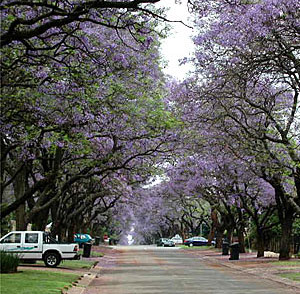 Paulus Albertus Bijvoet
Paulus Albertus Bijvoet
Paulus Albertus Bijvoet (Dierick lineage) emigrated to South Africa in 1966, where he worked for the South African Broadcasting Corporation.
He married Hermina Vermeer, a microbiologist, in Pretoria in 1973.
Paul and Hermina had two daughters, Cornelia Bijvoet (1977) and Willemien Bijvoet (1982).
Pretoria: Colorful Jacaranda trees =>
Willemien sent us the following e-mail:
Hey, My name is Willemien Alberta Bijvoet and I am 22 years old.
I am finishing my degree in Chemical Engeneering this year [2004] at PUK (Northwest-University) in Potchefstroom, South Africa.
My father's name is Paulus Albertus Bijvoet and he was born in 1945.He came to South Africa at around 1966. He is married to my mother Hermiena Vermeer. They are living in Pretoria.
I only have an older sister born in 1977. Her name is Cornelia, but she is married and her surname is now Naude. […] will ask my parents if they know more. I hope this helps you.
Kind regards Willemien
We would love to hear more from you, Willemien, (or Cornelia, Paul or Hermina).
"




